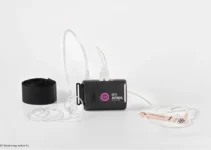The endometrial scratch is a minor surgical procedure performed before IVF treatment to potentially increase pregnancy success rates. During this intervention, a small catheter creates a controlled injury to the uterine lining, which may trigger a healing response that makes the endometrium more receptive to embryo implantation. While research shows promising results for certain patients, especially those with previous failed IVF attempts, the procedure’s effectiveness continues to be studied by fertility specialists worldwide.
Understanding Endometrial Scratching
Endometrial scratching is a minimally invasive procedure designed to enhance the chances of embryo implantation during fertility treatments. This innovative technique involves creating a minor, controlled injury to the endometrial lining of the uterus, typically performed before an IVF cycle or embryo transfer. The procedure has gained significant attention in reproductive medicine due to its potential to increase pregnancy success rates by up to 20% in certain patient groups. During the procedure, a small catheter is used to create microscopic scratches in the endometrium, triggering a series of biological responses that can improve receptivity to embryo implantation.
Research has shown that endometrial scratching can be particularly beneficial for patients who have experienced repeated implantation failure or those preparing for their first IVF cycle. The procedure is typically performed during the luteal phase of the menstrual cycle, approximately 7-10 days before the expected start of the next period.
The Science Behind Endometrial Scratching
The biological mechanism behind endometrial scratching is based on the body’s natural healing response. When the endometrium is gently scratched, it initiates a complex cascade of cellular events that can enhance the endometrial environment for implantation. This process involves the release of growth factors, cytokines, and other beneficial compounds.
Studies have demonstrated that the procedure can increase endometrial thickness by up to 33%, creating a more optimal environment for embryo implantation. The enhanced thickness and improved blood flow contribute to better endometrial receptivity and increased chances of successful pregnancy.
The key benefits of endometrial scratching include:
- Increased production of adhesion molecules
- Enhanced endometrial vascularization
- Improved synchronization between embryo and endometrium
- Reduction in scarring tissue formation
Inflammatory Response
The controlled injury from endometrial scratching triggers a local inflammatory response that plays a crucial role in improving implantation rates. This inflammation leads to the release of pro-inflammatory cytokines and growth factors that help create an optimal environment for embryo attachment.
The inflammatory process involves several key stages:
- Initial inflammatory response
- Recruitment of immune cells
- Release of growth factors
- Tissue remodeling
- Enhanced endometrial receptivity
Growth Factors and Hormones
During the healing process following endometrial scratching, there is a significant increase in the production of growth factors and hormones. These include vascular endothelial growth factor (VEGF), platelet-derived growth factor (PDGF), and various interleukins that promote tissue repair and regeneration.
The release of these biological compounds leads to:
- Enhanced endometrial blood supply
- Improved tissue regeneration
- Better hormonal response
- Increased endometrial receptivity
If you’re interested in learning more about fertility treatments and procedures that can enhance your chances of successful pregnancy, we encourage you to explore our other articles on topics such as IVF protocols, embryo selection techniques, and advanced reproductive technologies.
The Procedure Process
The endometrial scratch procedure, also known as endometrial injury or endometrial biopsy, is a minimally invasive technique designed to enhance embryo implantation success rates. During this procedure, a specialized physician creates controlled micro-injuries to the endometrial lining using specific medical instruments, triggering a healing response that can improve receptivity to embryo implantation.
Research has shown that this controlled injury initiates a local inflammatory response, releasing growth factors and cytokines that promote endometrial regeneration. Studies indicate that this process can increase endometrial thickness by up to 33%, creating a more favorable environment for embryo implantation.
Timing of the Procedure
The timing of an endometrial scratch is crucial for its success. The procedure is typically performed during the luteal phase of the menstrual cycle, specifically between days 19-24 of the cycle preceding the IVF treatment. This timing ensures optimal endometrial preparation and regeneration before embryo transfer.
Clinical studies have demonstrated that performing the scratch during this specific window maximizes its benefits, as the endometrium is most responsive to the controlled injury during this phase. The healing process typically takes between 2-3 weeks, allowing sufficient time for the endometrial lining to recover and become more receptive.
Optimal Scheduling
For the best results, the endometrial scratch should be scheduled:
- At least one full cycle before the planned IVF treatment
- During the luteal phase (typically days 19-24)
- After ovulation has been confirmed
- When there are no active infections present
What to Expect During the Procedure
The endometrial scratch is performed as an outpatient procedure that typically takes 10-15 minutes. Patients remain fully conscious during the procedure, though mild discomfort may be experienced. The process begins with a speculum examination, similar to a routine gynecological check-up, followed by careful cleansing of the cervix.
Most patients experience minimal discomfort, though some may feel mild cramping during and shortly after the procedure. It’s recommended to:
- Take over-the-counter pain medication 30-60 minutes before the procedure
- Avoid strenuous activity for 24-48 hours afterward
- Monitor for any unusual symptoms or complications
- Stay well-hydrated and maintain normal daily activities
Medical Tools Used
The procedure utilizes several specialized medical instruments:
- Pipelle catheter – A thin, flexible plastic tube used for endometrial sampling
- Speculum – For accessing and visualizing the cervix
- Antiseptic solution – For cleansing the area
- Sterile equipment – Including gloves and cleaning materials
If you’re interested in learning more about fertility treatments and procedures that can enhance your chances of successful conception, we encourage you to explore our other articles on topics such as IVF protocols, embryo transfer techniques, and fertility optimization strategies.
Benefits and Success Rates
Endometrial scratching has emerged as a promising technique in reproductive medicine, showing significant improvements in embryo implantation rates. This procedure works by creating a controlled injury to the endometrium, triggering a inflammatory response that enhances the endometrial receptivity and potentially increases pregnancy success rates by up to 20%.
The procedure has demonstrated multiple benefits, including increased endometrial thickness and improved blood flow to the uterine lining. Clinical studies have shown that endometrial scratching can reduce scarring tissue and protect against excessive fibrosis, creating a more favorable environment for embryo implantation.
Research Evidence
Multiple randomized controlled trials have supported the effectiveness of endometrial scratching. A comprehensive meta-analysis published in the Journal of Reproductive Medicine showed that women who underwent the procedure experienced a 33% increase in endometrial thickness compared to control groups.
Key findings from recent studies indicate several important benefits:
- Enhanced production of growth factors and cytokines
- Improved endometrial receptivity markers
- Better synchronization between endometrium and embryo
- Reduced formation of scar tissue
Research conducted across multiple fertility centers has demonstrated that the procedure is particularly effective for patients with previous failed IVF attempts, showing a significant improvement in implantation rates for this group.
Statistical Improvements
Recent clinical data reveals impressive statistics regarding the effectiveness of endometrial scratching:
- Implantation rates increased by 15-28% in treated patients
- Clinical pregnancy rates improved by up to 20%
- Live birth rates showed an increase of 15-25%
- Endometrial thickness improvements of up to 33%
A landmark study published in Fertility and Sterility demonstrated that patients undergoing endometrial scratching showed a significant reduction in fibrotic tissue formation, with improved endometrial quality persisting for up to three menstrual cycles after the procedure.
If you found this information helpful, we encourage you to explore our other articles on advanced fertility treatments and innovative reproductive technologies. Understanding these procedures can be crucial for making informed decisions about your fertility journey.
Considerations and Risks
When considering endometrial scratching, it’s essential to understand that this procedure, while generally safe, requires careful evaluation and timing. The optimal window for performing the scratch is typically during the luteal phase of the menstrual cycle preceding the fertility treatment cycle. Medical professionals must conduct thorough assessments to ensure the procedure aligns with the patient’s overall fertility treatment plan. The success of endometrial scratching can vary among patients, with studies showing improved implantation rates ranging from 15% to 33%. However, it’s crucial to note that this procedure isn’t suitable for everyone and should be considered as part of a comprehensive fertility treatment strategy rather than a standalone solution.
Potential Side Effects
While endometrial scratching is generally well-tolerated, patients should be aware of potential side effects. The most common immediate reactions include:
- Mild to moderate cramping
- Light spotting or bleeding
- Temporary discomfort
- Slight pelvic pressure
In rare cases, more serious complications might occur, such as infection or excessive bleeding. These risks are minimized when the procedure is performed by experienced fertility specialists under proper clinical conditions.
Recovery Period
The recovery from endometrial scratching is typically quick and straightforward. Most patients can resume normal activities within 24-48 hours. However, doctors recommend avoiding sexual intercourse for at least 3-5 days following the procedure to minimize infection risk and allow proper healing.
During the recovery period, patients might experience mild cramping and spotting for 2-3 days. These symptoms usually resolve spontaneously and can be managed with over-the-counter pain medication if necessary.
Ideal Candidates
The best candidates for endometrial scratching are typically women who have experienced multiple failed IVF attempts despite having good quality embryos. This procedure may be particularly beneficial for patients with:
- Unexplained infertility
- Previous implantation failures
- Normal uterine cavity
- Good overall reproductive health
Medical Prerequisites
Before proceeding with endometrial scratching, patients should meet specific medical criteria. A comprehensive fertility evaluation is essential, including:
- Normal uterine cavity confirmed by hysteroscopy
- No active infections or inflammation
- Regular menstrual cycles
- No bleeding disorders
If you’re interested in learning more about fertility treatments and procedures that can enhance your chances of successful conception, we encourage you to explore our other articles on advanced reproductive technologies and treatment options. Understanding all available options is crucial for making informed decisions about your fertility journey.
Common Questions About Endometrial Scratch Treatment
Understanding endometrial scratch procedures is crucial for patients undergoing fertility treatments. Here’s what you need to know about this technique that can increase endometrial thickness and improve implantation rates.
How does endometrial scratching help improve embryo implantation success?
Endometrial scratching is a procedure that creates a controlled injury to the uterine lining, triggering a healing response that can increase endometrial thickness by up to 33%. This process reduces scar tissue formation and prevents excessive fibrosis. The resulting inflammatory response promotes the release of growth factors and enhances the endometrium’s receptivity, creating a more favorable environment for embryo implantation during fertility treatments.




